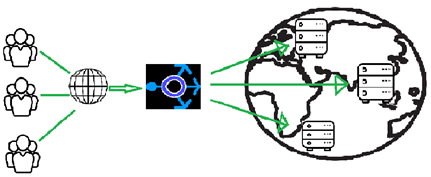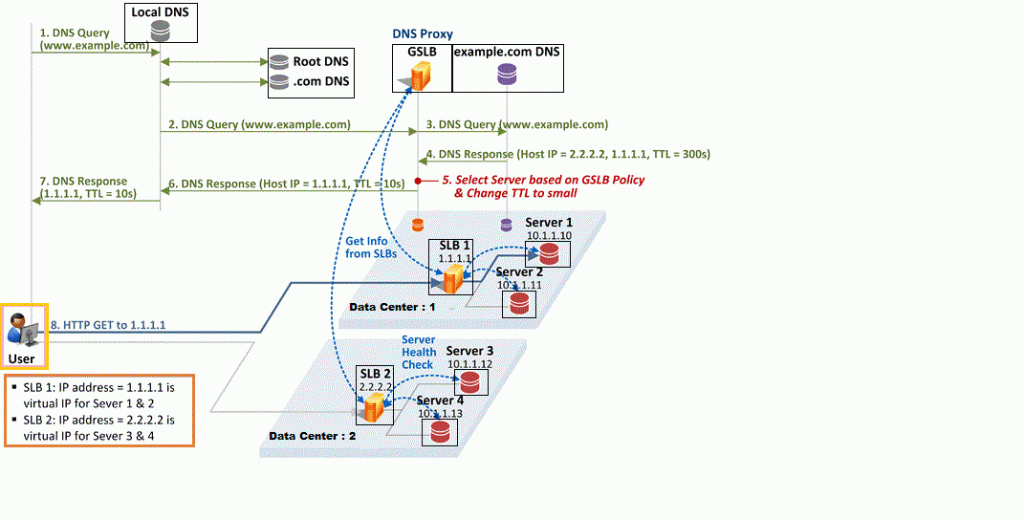Briefly, Explaining and Defining the working of GSLB – Global Server Load Balancer.

What is GSLB?
Global Server Load Balancer (GSLB) enables balancing server traffic load across multiple physical sites. It Refers to web traffic management and application delivery over multiple data centers whether it is public or private clouds in multiple geographical areas. A load of hosted applications on the servers at each location is managed by “local” Load Balancers or LTM Local Traffic Manager, and requests that are sent by the clients are generally sent to closer servers to make sure minimal latency and maximum performance.
Working of GSLB.

Network Scenario
- There are four web servers for www.example.com – two in Data center 1 and the other two in Data Center 2.
- The SLBs (SLB 1 & SLB 2) those located at the front end of the web servers at both sites. The user’s connection request is sent to the virtual IP addresses (1.1.1.1 and 2.2.2.2) of the SLBs, instead of directly to the IP addresses (10.1.1.10 – 13) of the four web servers at www.example.com. Then the SLBs forward the traffic to the web servers after translating the destination IP addresses of the request.
- At Data center 1, GLSB and example.com DNS servers are located.
The DNS resolution for this GSLB is as follows
- When the user sends a DNS query to the local DNS server to access www.example.com. Then the local DNS server forwards the query to the Root DNS server, and then to the .com (Top-level Domain server) DNS server.
- The query is sent to GSLB.
- As the GSLB works as a DNS server proxy, it simply forwards the DNS query to the example.com DNS server.
- At the example.com DNS server, the IP addresses (SLB’s virtual IP) of www.example.com (i.e. 1.1.1.1 and 2.2.2.2) are pre-configured. So, when the server starts to forward the values to the GSLB. TTL (Time to Live) during the delivery is assumed to be 300 seconds.
- Of the two IP addresses, the GSLB selects one that would work best for the user according to its own policy. It also Decreases the TTL Value (e.g. 8 seconds). That is to bring The local DNS server cache the binding information (IP address of www.example.com) for the minimum period of time.
- The IP address of the webserver 1.1..1.1 was selected according to the GSLB’s policy, and the changed TTL value is forwarded to the local DNS server.
- The local DNS server then sends the specific values to the user.
- Now the user sends HTTP GET message with its destination address set as the IP address of www.example.com, 1.1.1.1, to SLB1 at the site in Data center 1. And SLB1 forwards the HTTP GET message to the final destination server 10.1.1.10 after applying its policy or algorithms for load balance (considering server health, load, etc.)
We introduced how the GSLB works in this Blog. It is a very high-level definition and if you require detailed information regarding the GSLB or Data Center solutions then please contact us.
Zindagi Technologies, a leading IT consulting company that gives the provision services like Data center, managed IT solutions, IT consulting, and many more. You can get in touch with us either via mail or call +919773973971, also you can visit our website, Zindagi Technologies consists of experts in the field of Data center, Network security, Enterprise Network, Server virtualization, collaboration with combined experience in planning, designing & implementation and securing and deployment of various networks.
Author
Sameer Vats
Associate Consultant
